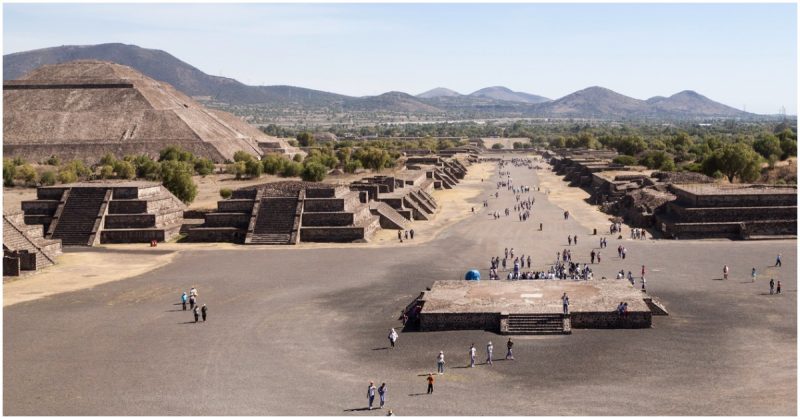In June of 1521 Hernan Cortes had a sizable force of Conquistadors outside of Tenochtitlan but was tasked with rescuing his garrison of a few hundred men in the city. These men in the city had massacred nearly 1,000 nobles during a feast and faced the wrath of the whole city of around 200,000 besieging their palace residence. For the men in the palace, it had been a long and bloody road to get into the city, and they would have many more months of conflict before they would finally be able to rest.
Cortes had an easy time getting into the city, possibly because the Aztecs wanted him to come in to better surround him. Once in the city, Cortes had the captive emperor, Montezuma, try to speak to the masses from the palace balcony. At this point, the population had had enough of the Emperor who had been a captive of the Spanish for several months and gone along with them at every juncture.
When he appeared, he was faced with a barrage of stones and other projectiles that would prove fatal. There were some arguments that the Spanish actually killed Montezuma, but it is hard to believe they killed a valuable hostage, especially one they had grown to know and respect over their many months together.
After Montezuma’s death, Cortes realized that they desperately needed to leave the city. This was made difficult due to there being only three causeways out of the lake-city and several removed bridges. The men built portable bridges to span the gaps and decided on a night escape.
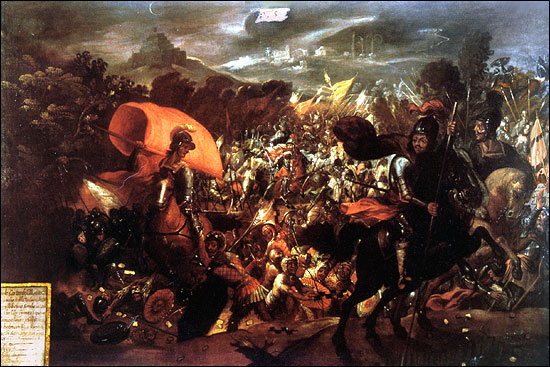
The Aztecs were more than ready and despite the powerful crossbows and steel armor of the Spanish, many of them were simply overwhelmed and captured. As soon as a Spaniard was captured they were dragged straight to the top of the highest temples in the center of the city and sacrificed for all to see. The scene must have been gruesome with just the light of the temple torches showing the certain fate of all who were captured.
To make matters worse, the portable bridges proved not to be so portable and became stuck at the first gap forcing the Spanish to improvise the crossings of the rest of the miles-long causeway. Men burdened with stolen treasures drowned in the lake, and many more were captured and sacrificed. When they finally got out of the city the Spanish were said to have lost about half of his Spaniards and many thousands of native allies assisting in the escape. The escape would later be known as “the sad night.”
Getting out of the city was not enough, the Aztecs still had a massive army in pursuit and the Spaniards had to reach allied territory before they could rest. A force of around 30,000 Aztecs were closing in, and Cortes and his Tlaxcalan allies decided to turn around and face them on a flat and open plains.
As the battle commenced the Spaniards, despite their small numbers, again held their ground and, knowing what would happen if they were captured they fought with their lives. Cortes figured that the Aztecs would scatter without their leader and sought out the Aztec with the finest armor and led a charge with what little cavalry they had left. Though they had maybe a two dozen horses at most, the Aztecs had not yet seen cavalry in action and broke away from the charges. Cortes was able to strike down who he correctly assumed was the Aztec commander and their forces fled back to Tenochtitlan.
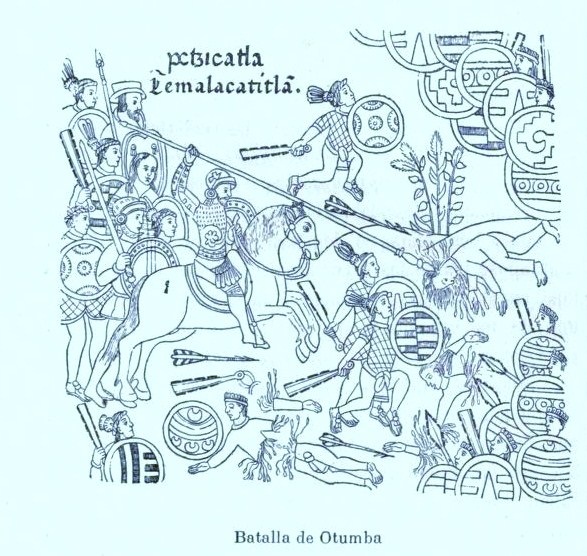
The battle again took its toll on the Spanish, but Cortes was determined to take Tenochtitlan once and for all. He desperately counted on securing his power base on the mainland as he was still a wanted man in New Spain (Cuba) and so for Cortes it was all or nothing.
At this point the Tlaxcalans could have captured Cortes and brokered a peace deal between their tribes and the Aztecs, but Cortes convinced them to stay allies with the Spanish. This alliance required huge concessions by the Spanish, but Cortes was in no position to dictate terms. After some recuperating the Spanish and their allies began to subjugate or form alliances with almost all of the tribes and cities around Tenochtitlan, especially the cities that were at the end of the long causeways leading to the city.
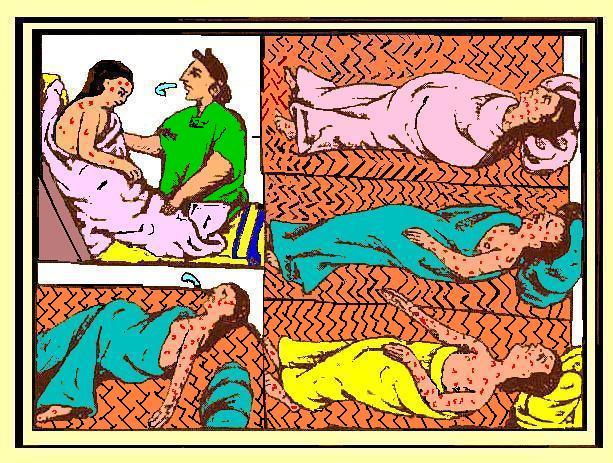
While Cortes traveled around Mesoamerica, the Aztecs were hopelessly dealing with a new threat, smallpox. Perhaps started by a fallen Spaniard during the night retreat from the city, the disease struck the city hard. All of Mesoamerica was hit with roughly 40% of the native population succumbing to the disease or simply of starvation from being unable to gather food or feed themselves.
Death rates in the city would have been even higher with half or more of the city falling to the new European disease. While the Spanish were not immune, they had less of a chance of catching the disease and lower mortality rates as well. Likely due to this epidemic, the Aztecs waited behind the causeways of their city rather than going on another offensive.
Cortes knew that with his limited numbers he needed to contain the Aztecs and fight them where he wanted to, so he needed to contain the causeways and the surrounding lake. After taking the causeways, the aqueducts leading into the city were destroyed leaving the Spaniards with ample freshwater and the city with almost nothing as lake Texcoco was brackish.
For the lake, Cortes built several large ships armed with cannons, which stood much higher than the canoes of the Aztecs. As the causeways were secured the Aztecs launched furious assaults up the causeways supported on either side by canoe troops. Many fierce battles were fought and whenever the Spanish could get their boats involved they won handily, however many time the native allies of Cortes suffered many casualties.
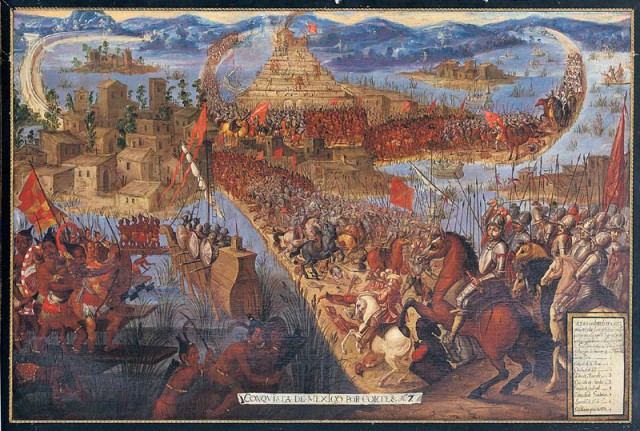
Over several days, a tug of war for control of the causeways ensued with Spanish gains won back by the Aztecs and fortified overnight. Eventually, men were ordered to stand watch and sleep in position on the causeways to hold what little ground they had gained. Aztec leader Guatemoc attempted an ambush on the Spanish ships and, at first, was successful, killing two Spanish leaders. His second attempt was discovered, and Aztec forces were counter-ambushed and decimated.
Large scale counter attacks continued to be resisted by the Spanish at the causeways though anytime they pushed too far they risked capture. On one occasion around 60 Spaniards were captured and sacrificed, and Cortes himself was almost taken.
The siege continued like this day after day, with both sides suffering almost equally. The Spanish allies were almost all forced to go home and recuperate as they suffered heavy losses. The Aztecs had little food left and resorted to cannibalism and eating leather and clothes and drinking the brackish, unclean water led to more diseases. The difference in the siege may have been that the Spaniards were able to receive aid from their original settlement of Veracruz, which allowed them to continue pressing forward.
Finally, Cortes ordered a simultaneous push from all of the causeways with naval support and pushed into the city. Several days of bitter street fighting followed with temples and palaces being fortified. Any Spanish prisoner who had not yet been sacrificed was now killed at the still looming great temples.
When the Aztecs finally surrendered it was difficult to stop the carnage as the Tlaxcalans, who had long been the Aztec’s source of battle captives for sacrifice, continued to slaughter the inhabitants. Depending on figures from the smallpox epidemic and locals staying or fleeing it is very difficult to gauge the losses but around 100,000 seems reasonable though it could have been half or double that number.
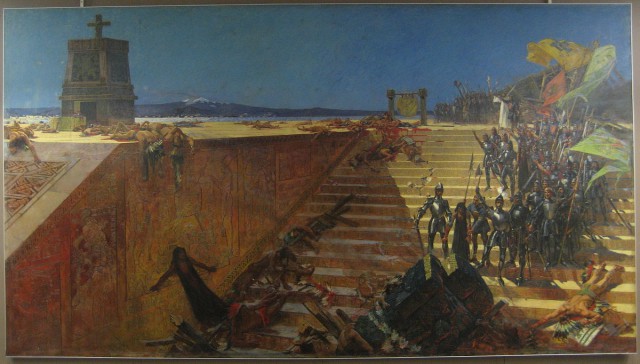
With control over the most powerful city in Mesoamerica, Cortes finally had security in his rule. His treaty with the Tlaxcalans was hardly honored and was one of the first in a series of American treaties to be disregarded after the Europeans got what they wanted. Despite this, many of the tribes that helped Cortes were simply thankful that the Aztecs were conquered as constant wars and taking of captives for sacrifices were finally over for the foreseeable future.
The far superior weapons and armor of the Spaniards, especially the crossbows which arguably played a larger role than the firearms, were instrumental in their victory. In many accounts the greatest fear of the Spanish was that they might slip and fall down in battle as that was the only real way they were dragged away and sacrificed.
Their native allies were also vital to their success as the Spanish would likely have been massacred had any allies such as the Tlaxcalans decided to turn against them. In the final siege the Spanish were spread thin along the three causeways and the native allies helped to bolster their numbers.
The motivations of the Spanish in battle were also very important. They knew from early on that if they were captured they would certainly be sacrificed so each battle was fought with the utmost tenacity simply because surrender was not an option. They can be viewed as conquerors or killers but even with all of their newer technology and help from the allies and smallpox, the Spanish won an unlikely and astonishing victory at Tenochtitlan.
By William McLaughlin for War History Online
